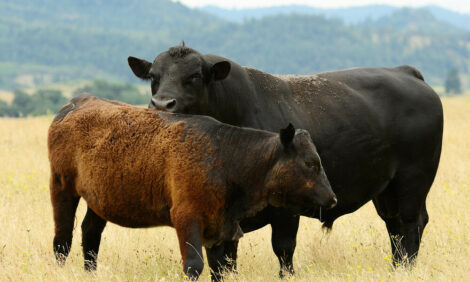



Cost Analysis: SDSU Release Beef Cow Budget
US - An updated resource from South Dakota State University can help producers manage feed costs that account for roughly half of the yearly costs associated with the cow herd.“All cattlemen need to take a close look at what they are feeding this year," SDSU Marketing/Farm Business Management Educator Heather Gessner said. “They also need to account for shipping costs and fixed costs as they analyze their operations. Profitability is going to be closely tied to efficiency due to the current grain and livestock market situations.”
* "The most obvious objective is determining what your current production costs are on a per-cow basis." |
|
SDSU Marketing/Farm Business Management Educator Heather Gessner
|
“All cattlemen need to take a close look at what they are feeding this year,"
Gessner said producers can gain management insights by putting their current costs into the budget.
“The most obvious objective is determining what your current production costs are on a per-cow basis. Realizing what it costs to carry one cow for the year is an eye-opener for many producers. Many times we just pay the bills without looking at a per-cow cost. Once you know what that figure is, a lot of other decisions can follow.”
For example, the additional information can make clear the financial advantages in culling cows that are either open or consistently wean the smallest calves.
“If they aren’t working for you, they are working against you and costing you a lot of money in the meantime,” Gessner said.
The budget can also help with marketing the calf.
“Once you know the total cow cost for a year, you can look at projected calf prices and begin making marketing decisions. The price you receive for the calf should cover his production costs — in this case, the feed and other expenses you put into the cow,” Gessner said.
A third way in which producers can use the budget is to determine areas they could change to reduce yearly production expenses. Additionally narrow returns should also encourage producers to become more efficient at production.
“Among the things to look at are your feed rations. Are there ways to reduce costs there? Take into consideration any broken feed bunks or feeders that could increase the amount of wasted feed. With the current cost of corn and hay, a new or repaired feeder could pay for itself in short order,” Gessner said.
For assistance developing your beef cow budget or looking at feed rations that may reduce your inputs, contact your local Extension livestock or farm business management educator.
Further Reading
| - | You can view the revised beef cow budget by clicking here. |


